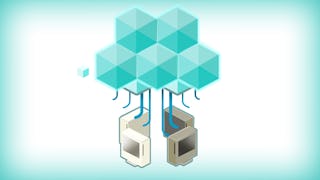This Go for Cloud and Network course provides a comprehensive introduction to using the Go programming language (Golang) for developing scalable, high-performance applications in cloud and network environments. Designed for both beginners and intermediate developers, the course focuses on real-world applications of Go for cloud-native architecture, networking protocols, system integration, and infrastructure automation.

Enjoy unlimited growth with a year of Coursera Plus for $199 (regularly $399). Save now.

Go for Cloud and Networks
This course is part of Go Programming Language Specialization

Instructor: Edureka
Included with
Recommended experience
What you'll learn
Understand the motivation for cloud-native apps and how Go fits into modern architectures.
Decompose applications into microservices and implement event-driven orchestration.
Monitor, test, and scale microservices for cloud and network environments.
Apply Go to build secure, scalable, and production-ready distributed applications.
Details to know

Add to your LinkedIn profile
17 assignments
See how employees at top companies are mastering in-demand skills

Build your subject-matter expertise
- Learn new concepts from industry experts
- Gain a foundational understanding of a subject or tool
- Develop job-relevant skills with hands-on projects
- Earn a shareable career certificate

There are 5 modules in this course
This module is designed to inspire and equip learners with the knowledge and skills necessary to embrace cloud-native development principles using the Go programming language. We will work with the fundamentals of cloud native apps, docker and Kubernetes in this module.
What's included
18 videos2 readings5 assignments
In the second week of this course, delve into the intricacies of building scalable and maintainable applications through decomposition with microservices architecture, specifically implemented using the Go programming language.
What's included
8 videos4 readings4 assignments
Orchestration within this module involves the efficient coordination and management of various microservices, enabling seamless deployment, scaling, and monitoring across distributed environments. Additionally, the module emphasizes event-driven architecture, where microservices communicate through asynchronous, decoupled events rather than synchronous requests.
What's included
5 videos2 readings3 assignments
The forth week of this course is tailored for Go developers wanting to master the essential techniques and tools required to effectively monitor, test, and ensure the reliability and performance of microservices built with the Go programming language. As microservices architectures become increasingly prevalent in modern software development, the need for robust monitoring and testing strategies becomes paramount.
What's included
9 videos1 reading4 assignments
This module is designed to assess an individual on the various concepts and teachings covered in this course. Answer a comprehensive quiz which marks you as a learner who is confident in Go for Cloud and Networks course.
What's included
1 video1 reading1 assignment1 discussion prompt
Earn a career certificate
Add this credential to your LinkedIn profile, resume, or CV. Share it on social media and in your performance review.
Explore more from Software Development
 Status: Free Trial
Status: Free TrialGoogle Cloud
 Status: Free Trial
Status: Free TrialEdureka
 Status: Free Trial
Status: Free TrialUniversity of Illinois Urbana-Champaign
Why people choose Coursera for their career





Open new doors with Coursera Plus
Unlimited access to 10,000+ world-class courses, hands-on projects, and job-ready certificate programs - all included in your subscription
Advance your career with an online degree
Earn a degree from world-class universities - 100% online
Join over 3,400 global companies that choose Coursera for Business
Upskill your employees to excel in the digital economy
Frequently asked questions
The Go for Cloud and Networks course is a specialized training program designed to teach developers how to leverage the Go programming language for building applications and services specifically tailored for cloud computing environments and networked systems. This course provides participants with a deep understanding of Go's capabilities and how to effectively utilize them in cloud and networking contexts.
The prerequisites for Go for Cloud and Networks include: - Computer Science Fundamentals: Familiarity with fundamental concepts such as data structures (arrays, slices, maps) and algorithms can assist in applying these concepts in Go for Cloud and Networks. - Text Editor or Integrated Development Environment (IDE): Familiarity with using a text editor (e.g., VSCode, Sublime Text) or an IDE (e.g., GoLand, VS Code with Go extension) for writing and managing code. - Command-Line Interface (CLI) Familiarity: Basic knowledge of using the command line interface for compiling, running, and managing files can be beneficial for working with Go tools. While these are helpful prerequisites, it's worth noting that Go for Cloud and Networks is designed to be user-friendly and accessible to many users. Beginners can start with basic tasks and gradually build their skills as they gain more experience with the tool.
Operating System Compatibility: Golang is compatible with the following Windows operating systems:
Windows 11 (64-bit)
Windows 10 (64-bit)
Processor: A 64-bit processor with at least 1.4 GHz speed or higher is recommended.
Memory (RAM): A minimum of 8 GB RAM is required for better performance.
Hard Drive Space: You need at least 2 GB of free hard drive space for the installation.
More questions
Financial aid available,


